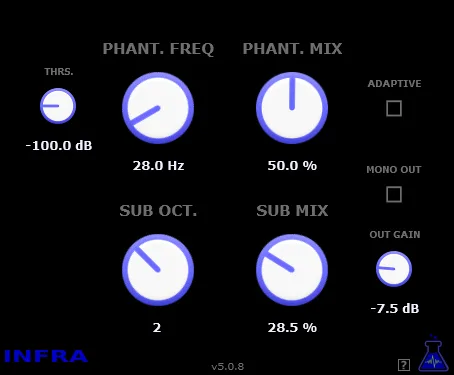GMax: Your Tool for Loudness and Dynamic Control
In the world of modern music production, the battle for “loudness” is constant. Artists, sound engineers, and producers strive to make their tracks sound powerful and “confident” among their competitors. However, simply increasing the overall signal level can lead to unwanted distortion known as clipping. This is where limiters come to the rescue – indispensable tools for the final touch in mixing and mastering.
Among the variety of available plugins, GMax from GVST stands out for its simplicity and effectiveness. It is a specialized maximizing limiter designed for one primary task: to increase the perceived level of your audio signal, while preventing clipping and maintaining maximum clarity of sound. It acts as a smart gatekeeper, allowing you to “push through” the overall amplitude, but instantly stops any peaks that try to exceed the set maximum.
How Does a Maximizing Limiter Work?
Unlike a standard compressor, which reduces the dynamic range, making quieter parts louder, a limiter works as a rigid “ceiling.” It drastically reduces the level of any parts of the signal that exceed the threshold (which in the maximizer is often implicitly related to the input gain). A maximizing limiter, like GMax, combines the limiting function with pre-amplification of the input signal. This means that you increase the overall track level, and the limiter “cuts off” only the loudest peaks that would otherwise cause clipping.
The GMax workflow is intuitive:
- First, the input audio signal passes through the gain section, where you increase its overall level.
- Next, this amplified signal is sent to the limiting section.
- Any parts of the signal whose amplitude exceeds the set “Ceiling” level are instantly reduced.
- Once the signal stops exceeding the “ceiling,” the level returns to normal according to the “Release Time” setting.
This approach allows you to achieve a high level of loudness while maintaining control over peaks and avoiding digital distortion.
Key Control Elements of GMax
GMax offers a set of simple but powerful controls that allow you to precisely adjust its operation to your needs:
- Gain: This parameter determines how much the input audio signal will be amplified *before* limiting. Increasing the Gain value causes more of the signal to be “pushed” to the “Ceiling” level, which causes stronger limiting and, as a result, an increase in perceived loudness. This actually sets the threshold for limiting relative to the “Ceiling.”
- Ceiling: This is the absolute maximum output level that the signal can reach after processing by GMax. This parameter is critical for preventing clipping at the output of your DAC (digital-to-analog converter) or in subsequent stages of the signal chain. It is usually set to around -0.3 dBFS or -0.1 dBFS to have a small margin.
- Release: Controls how quickly the limiter stops applying gain reduction after the signal level drops below the “Ceiling.” A short release time (fast recovery) can make the limiting more noticeable, possibly causing a “pumping” effect at low frequencies or when working with material with a strong attack. A longer release time (slow recovery) usually sounds more transparent, but can cause the quieter parts of the signal to remain quieter for longer after a loud peak. Choosing the right release time depends on the nature of the audio material and the desired sound result.
- Meter: A visual indicator that shows the input and output signal levels, as well as the amount of gain reduction applied. This tool is invaluable for monitoring how actively the limiter is working and helps you make informed decisions about Gain and Release settings.
GMax Usage Scenarios
Although maximizing limiters are most often associated with the mastering stage, where they are used to bring the final track to the required commercial loudness level, GMax is a flexible tool that can be useful at the mixing stage as well:
- Mastering: Place GMax on the master bus as the last plugin in the chain. Use Gain to increase the overall loudness, set the Ceiling to prevent clipping, and adjust the Release to achieve a balance between loudness and transparency, avoiding unwanted artifacts.
- Mixing: GMax can be used on individual tracks to control dynamic peaks. For example, on vocals with high dynamics, on an aggressive bass guitar, or on certain drum elements (e.g., on a snare or kick), to “hold” them in the mix. In such cases, it can act as an alternative or supplement to a compressor, offering a more rigid peak limitation.
GVST GMax is a great example of how a simple interface can hide powerful functionality. Its cross-platform compatibility (available on Windows, macOS, and Linux) in VST format makes it accessible to a wide range of users regardless of their chosen DAW and operating system. If you are looking for a reliable, efficient, and user-friendly limiter to increase the loudness and control the dynamics of your tracks, GMax is definitely worth your attention.



